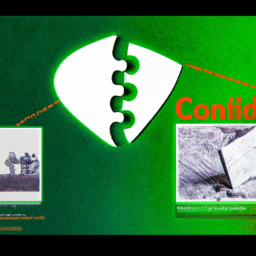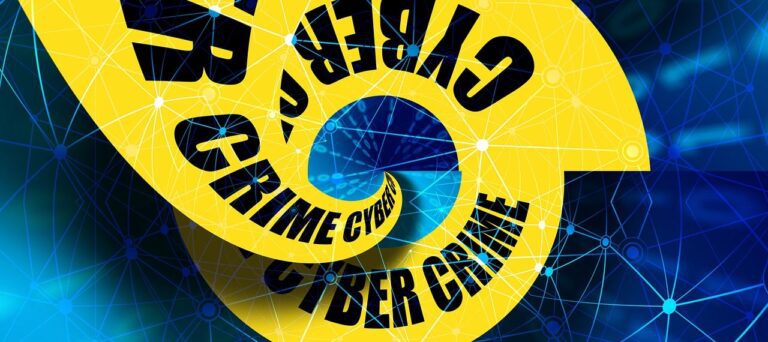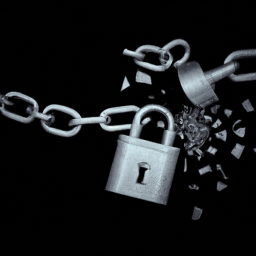Should We Involve External Stakeholders In Our Continuity Drills?
In the ever-evolving world of business, ensuring the resilience of your organization is of paramount importance. One key aspect of this is conducting continuity drills to test your processes and procedures in the face of unforeseen disruptions. But here’s the question: should you involve external stakeholders in these drills? This article explores the benefits and considerations of involving external stakeholders, from suppliers to customers, in order to enhance the effectiveness and comprehensiveness of your continuity plans. By doing so, you can build stronger relationships, foster collaboration, and ultimately strengthen your organization’s ability to navigate through turbulent times.
The Importance of Continuity Drills
Continuity drills are an essential component of any organization’s preparedness and resilience strategy. These drills are designed to test and evaluate an organization’s ability to maintain critical functions and operations during a disruption or crisis. The goal is to ensure that the organization can effectively respond, recover, and continue to provide essential products or services.
Definition of continuity drills
Continuity drills, often known as business continuity exercises or tests, are simulated scenarios that replicate potential disruptions to an organization’s operations. These drills allow organizations to assess their preparedness, identify gaps, and improve their response capabilities. Continuity drills can be tabletop exercises, functional exercises, or full-scale simulations, depending on the organization’s needs and resources.
Importance of continuity drills for organizations
Continuity drills serve as a vital tool for organizations to build resilience and preparedness. By simulating different crisis scenarios, organizations can identify vulnerabilities and address them before a real incident occurs. These drills provide an opportunity for personnel to familiarize themselves with the organization’s emergency plans, protocols, and communication channels, ensuring a coordinated response during a crisis. Continuity drills also help validate the effectiveness of existing contingency measures and identify areas for improvement. Regularly conducting continuity drills is crucial to maintaining a state of readiness and minimizing the potential impact of disruptions.
Internal Stakeholders in Continuity Drills
Definition of internal stakeholders
Internal stakeholders refer to individuals or groups within an organization who have a vested interest in its continuity and success. These stakeholders can include senior management, department heads, employees, and other key personnel. Internal stakeholders play a significant role in continuity drills as they possess knowledge of the organization’s processes and systems.
Roles of internal stakeholders in continuity drills
During continuity drills, internal stakeholders have various roles and responsibilities. Senior management provides overall direction and ensures that continuity plans align with strategic objectives. Department heads are responsible for coordinating continuity efforts within their respective areas and ensuring the implementation of predefined protocols. Employees actively participate in the drills, following established procedures and providing feedback for improvement. Internal stakeholders contribute their expertise and experience to ensure the drills effectively assess the organization’s resilience.
Advantages and limitations of involving internal stakeholders
Involving internal stakeholders in continuity drills offers several advantages. Firstly, their participation fosters a culture of preparedness and increases awareness of the importance of business continuity. This helps build a resilient organizational culture that promotes proactive measures to mitigate risks. Additionally, internal stakeholders possess valuable operational knowledge, enabling them to identify weaknesses or inefficiencies in continuity plans. Their involvement also promotes teamwork and collaboration, as they work collectively to address challenges and improve response capabilities.
However, there are also limitations to solely relying on internal stakeholders. Internal perspectives may unintentionally result in blind spots and a lack of creative thinking. Involving external stakeholders can help mitigate these limitations by bringing fresh ideas, diverse perspectives, and additional expertise to the table.
External Stakeholders in Continuity Drills
Definition of external stakeholders
External stakeholders refer to individuals or groups who have a direct or indirect interest in an organization but are not part of its internal structure. These stakeholders can include customers, suppliers, partners, regulatory bodies, industry associations, and local communities. While their role in an organization’s day-to-day operations may vary, their involvement in continuity drills can be invaluable.
Types of external stakeholders
External stakeholders can be categorized into different groups based on their relationship with the organization. Customers are stakeholders who rely on the organization’s products or services and need to be informed about contingencies that may impact them. Suppliers play a crucial role in an organization’s supply chain and may need to be involved in continuity planning. Community stakeholders, such as local authorities or neighboring businesses, can also be affected by disruptions and should be part of the drills to ensure a coordinated response.
Benefits of involving external stakeholders
involving external stakeholders in continuity drills brings various benefits. Firstly, it enables organizations to understand the potential impacts of disruptions on their stakeholders and develop strategies to mitigate those impacts. By involving key customers and suppliers, organizations can maintain critical relationships during crises and communicate effectively about the steps being taken to address disruptions. Additionally, the involvement of regulatory bodies and industry associations ensures compliance with relevant regulations and industry standards. External stakeholder involvement also enhances the organization’s reputation and demonstrates its commitment to transparency and stakeholder engagement.
Challenges and risks of involving external stakeholders
While involving external stakeholders in continuity drills can be advantageous, it also poses challenges and risks. One challenge is managing communication and coordination among a diverse group of stakeholders with varying priorities and expectations. Each stakeholder may have specific requirements, and addressing them all can be complex. Moreover, there is a risk of potentially sensitive organizational information being shared beyond the intended participants, leading to loss of confidentiality. Balancing the benefits of involving external stakeholders with the need to protect confidential information is crucial.
The Need for Involving External Stakeholders
External stakeholder perspectives
Involving external stakeholders in continuity drills provides organizations with valuable perspectives that would otherwise be overlooked. External stakeholders bring a fresh set of eyes and diverse expertise, enabling them to identify potential gaps or alternative solutions that internal stakeholders may not have considered. They offer a broader understanding of the organization’s external environment, including market trends, regulatory changes, and customer expectations. By incorporating these perspectives, organizations can enhance their crisis response strategies and improve overall resilience.
Enhanced coordination and collaboration
Including external stakeholders in continuity drills facilitates coordination and collaboration among different entities involved in an organization’s operations. For instance, involving suppliers in drills helps identify supply chain vulnerabilities and establish joint contingency plans. Coordinating with local authorities or industry associations facilitates a more effective response during emergencies. The inclusion of customers allows organizations to understand their concerns and expectations, enabling them to tailor their response strategies accordingly. Enhanced coordination and collaboration result in a more comprehensive and coordinated response during disruptions.
Additional expertise and resources
External stakeholders bring additional expertise and resources to the table, augmenting an organization’s capabilities in managing disruptions. Suppliers may have specific knowledge about critical assets or dependencies within the supply chain, contributing to more effective risk mitigation strategies. Industry associations can provide insights into best practices and benchmarks, ensuring a more informed approach to continuity planning. By involving external stakeholders, organizations can tap into a wide range of skills, competencies, and resources that would not be available internally.
Increased stakeholder buy-in and support
One significant advantage of involving external stakeholders in continuity drills is the potential to increase stakeholder buy-in and support. By including stakeholders early on in the planning process, organizations demonstrate their commitment to collaborative decision-making and transparency. This involvement fosters a sense of ownership among stakeholders, increasing their understanding of the organization’s resilience efforts. When stakeholders feel valued and included, they are more likely to provide support during disruptions, allocate resources, and cooperate in response and recovery efforts.
Factors to Consider in Involving External Stakeholders
Identifying relevant external stakeholders
When involving external stakeholders in continuity drills, it is essential to identify those who have a direct or indirect impact on the organization’s operations. This may include customers, suppliers, regulatory bodies, industry associations, and local communities. A comprehensive stakeholder analysis helps identify the key individuals or groups and their specific roles in the organization’s continuity efforts.
Defining appropriate roles and responsibilities
Clearly defining the roles and responsibilities of external stakeholders is crucial for successful involvement in continuity drills. Each stakeholder group should have a specific purpose and contribution within the drills, aligned with their expertise and relationship with the organization. For instance, customers may provide feedback on communication effectiveness, while suppliers may participate in testing supply chain resilience.
Ensuring confidentiality and data security
Confidentiality and data security are paramount when involving external stakeholders in continuity drills. Organizations must establish protocols and measures to protect sensitive information shared during the drills. Non-disclosure agreements may be necessary to ensure that confidential information remains within the intended participants. Regular audits of data security practices and compliance with relevant regulations help mitigate the risk of unauthorized disclosure.
Managing potential conflicts of interest
Involving external stakeholders may introduce potential conflicts of interest, especially when different stakeholders have diverging priorities or objectives. It is crucial to proactively identify and address these conflicts to ensure a collaborative and effective engagement process. Clear guidelines for decision-making, conflict resolution mechanisms, and a neutral facilitator can help manage conflicts and maintain a productive environment within continuity drills.
Developing effective communication channels
Establishing effective communication channels is essential for involving external stakeholders in continuity drills. Regular updates, briefings, and sharing of information ensure that stakeholders are kept informed about the organization’s continuity efforts. Providing stakeholders with a platform to provide feedback, ask questions, and express concerns fosters open dialogue and enhances stakeholder engagement. Utilizing technology, such as secure online platforms or video conferencing, can facilitate communication and engagement, especially when stakeholders are geographically dispersed.
Best Practices for Involving External Stakeholders
Establishing clear objectives and expectations
Before involving external stakeholders in continuity drills, organizations should establish clear objectives and expectations. Clearly defining the purpose of their involvement, what they are expected to contribute, and how their input will be used ensures a focused and productive engagement process. By aligning objectives, organizations can maximize the value gained from involving external stakeholders.
Providing adequate training and orientation
To ensure effective participation, organizations should provide adequate training and orientation to external stakeholders before the drills. This includes familiarizing them with the organization’s business continuity plans, protocols, and procedures. Training sessions can also cover the specific roles and responsibilities of each stakeholder group, ensuring that they understand their contributions and how they fit into the overall continuity efforts.
Maintaining regular communication and updates
Regular communication and updates are crucial to keep external stakeholders engaged throughout the continuity drills. Providing timely information about the progress, outcomes, and any changes in plans helps stakeholders stay informed and maintain their commitment. Regular briefings, newsletters, or online platforms dedicated to sharing updates and answering questions provide transparency and foster ongoing engagement with external stakeholders.
Regularly evaluating and adjusting involvement
Organizations should regularly evaluate the involvement of external stakeholders in continuity drills to ensure its effectiveness and value. Gathering feedback from stakeholders about their experience, challenges, and suggestions for improvement allows organizations to continuously refine their engagement strategies. Adapting the involvement process based on lessons learned and stakeholders’ input enables organizations to enhance their relationship with external stakeholders and optimize their contributions.
Recognizing and appreciating stakeholder contributions
Recognizing and appreciating the contributions of external stakeholders is key to building a positive and enduring relationship. Acknowledging their expertise, efforts, and input publicly demonstrates the organization’s gratitude and respect. Recognitions can take various forms, such as certificates of participation, public acknowledgments, or thank-you letters. Recognizing stakeholder contributions fosters a sense of pride and encourages continued engagement in future continuity drills.
Case Studies: Examples of Successful Involvement
Organization A’s experience with external stakeholders
Organization A, a manufacturing company, involved external stakeholders in their continuity drills to enhance their preparedness and response capabilities. They invited key customers and suppliers to participate in tabletop exercises, simulating disruptions to the supply chain and assessing the effectiveness of communication and coordination. As a result, Organization A gained valuable insights into their supply chain vulnerabilities and identified opportunities for improvement. The involvement of external stakeholders led to the development of joint contingency plans and strengthened relationships with their business partners.
Organization B’s approach in engaging external stakeholders
Organization B, a healthcare provider, recognized the importance of involving external stakeholders such as local authorities and community organizations in their continuity drills. They conducted full-scale simulations, simulating various crisis scenarios and involving external stakeholders in response and coordination efforts. This approach enabled Organization B to test their collaboration with external partners and ensure a coordinated response during emergencies. The involvement of external stakeholders also allowed for joint training and exercises, enhancing the organization’s overall emergency preparedness.
Lessons learned and key takeaways
The case studies highlight the benefits and successes of involving external stakeholders in continuity drills. These examples demonstrate that external stakeholder involvement can significantly enhance an organization’s preparedness efforts by providing valuable perspectives, fostering collaboration, and augmenting resources and expertise. By actively engaging external stakeholders, organizations can build stronger relationships, improve their response capabilities, and develop more comprehensive continuity plans.
Potential Risks and Challenges
Loss of confidentiality
One potential risk of involving external stakeholders in continuity drills is the loss of confidentiality. Sharing sensitive information about an organization’s processes, systems, or security measures may pose a risk of unauthorized disclosure. Organizations must implement robust confidentiality measures, such as non-disclosure agreements, restricted access to information, and secure communication channels, to mitigate this risk effectively.
Competing stakeholder interests
Involving external stakeholders in continuity drills may introduce competing interests or conflicting perspectives. Different stakeholders may have varying priorities or objectives, which could challenge the decision-making process or hinder effective collaboration. Organizations need to proactively manage these conflicts, define decision-making processes, and establish channels for conflict resolution to ensure a harmonious and productive engagement with external stakeholders.
Difficulties in coordination and scheduling
Engaging external stakeholders in continuity drills may pose challenges in terms of coordination and scheduling. External stakeholders, such as suppliers or regulatory bodies, may have their own operational demands and constraints that need to be considered. Organizations must leverage technology and effective communication channels to ensure smooth coordination and accommodate the availability and scheduling constraints of external stakeholders.
Legal and regulatory considerations
Organizations need to be aware of legal and regulatory considerations when involving external stakeholders in continuity drills. This includes compliance with data protection and privacy laws, intellectual property rights, and any industry-specific regulations. Organizations must ensure that they obtain necessary permissions or consent and adhere to relevant legal frameworks when sharing information or involving external stakeholders in drills.
Mitigating Risks and Addressing Challenges
Implementing robust confidentiality measures
To mitigate the risk of loss of confidentiality, organizations should implement robust measures to protect sensitive information shared during continuity drills. This includes the use of non-disclosure agreements, restricted access controls, and encryption for sensitive electronic data. Regular audits and training of personnel on data security practices help maintain a strong confidentiality framework.
Establishing clear guidelines and protocols
To address competing stakeholder interests, organizations should establish clear guidelines and protocols for decision-making and conflict resolution. Defining roles, responsibilities, and escalation procedures ensures a consistent and fair engagement process. Providing stakeholders with an understanding of the decision-making criteria and mechanisms fosters transparency and facilitates effective collaboration.
Resolving conflicting stakeholder interests
When conflicting stakeholder interests arise, organizations should proactively address them through open dialogue and collaboration. Identifying common ground, seeking win-win solutions, and considering the broader organizational objectives can help reconcile conflicting perspectives. The involvement of neutral facilitators or mediators can assist in managing conflicts and finding mutually beneficial outcomes.
Leveraging technology for coordination and scheduling
To overcome difficulties in coordination and scheduling, organizations should leverage technology solutions. Secure online platforms, video conferencing, and project management tools enable real-time communication and collaboration, regardless of stakeholders’ geographic locations. Organizations can also utilize scheduling tools and shared calendars to facilitate coordination and accommodate the availability of external stakeholders.
Ensuring compliance with relevant laws and regulations
To address legal and regulatory considerations, organizations must ensure compliance with relevant laws and regulations when involving external stakeholders in continuity drills. This includes obtaining necessary permissions, consents, or waivers, adhering to data protection and privacy laws, and respecting intellectual property rights. Regular review of legal and regulatory frameworks helps organizations stay up-to-date and compliant with evolving requirements.
Conclusion
Involving external stakeholders in continuity drills is a strategic imperative for organizations seeking to enhance their preparedness and resilience. While internal stakeholders play a vital role, external stakeholders bring diverse perspectives, expertise, and resources that are invaluable during disruptions. The benefits of involving external stakeholders, such as enhanced coordination, collaboration, and stakeholder buy-in, outweigh the associated risks and challenges.
Organizations must carefully consider factors such as identifying relevant external stakeholders, defining roles and responsibilities, ensuring confidentiality, managing conflicts of interest, and establishing effective communication channels. Implementing best practices, including clear objectives, adequate training, regular communication, and stakeholder recognition, facilitates a successful involvement process.
Through effective involvement of external stakeholders, organizations can strengthen their continuity plans, improve their crisis response capabilities, and build stronger relationships with stakeholders. Balancing risks and challenges with the advantages gained from external stakeholder involvement is crucial for organizations seeking to enhance their resilience and ensure business continuity. Recommendations for organizations include integrating external stakeholder involvement into their continuity drills, regularly assessing and adjusting involvement strategies, and recognizing the importance of collaboration and stakeholder engagement in building resilience.








